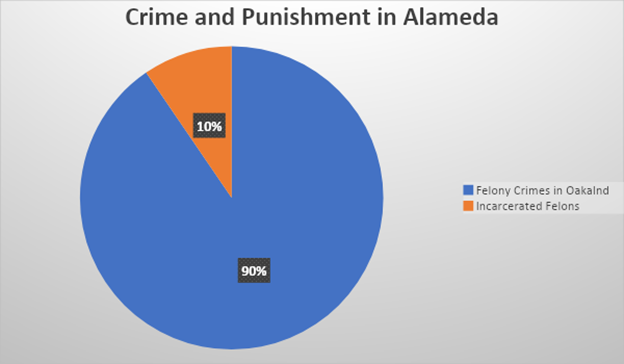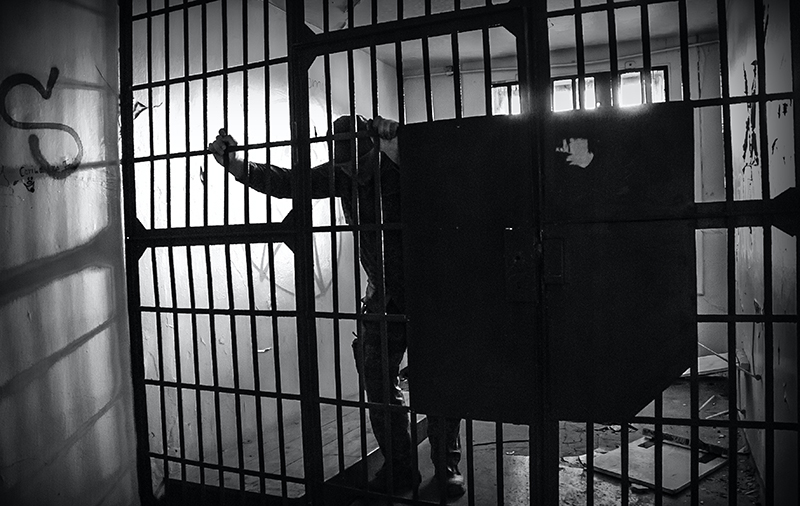Criminals in Alameda County just caught a break.
Newly elected District Attorney Pamela Price has issued a draft memorandum to her staff requiring them to seek probation in nearly all felony cases with the exception of murder and some sex crimes involving children. Further, it requires that more severe sentences and enhancements such as the use of a firearm be subject to supervisorial review.
Her reason – a desire to reduce the prison population.
Alameda County today is a great place to be a criminal and a terrible place to be a crime victim. With her new policy, Pamela Price is doing everything she can to keep it that way.
Here are some statistics from just the City of Oakland (Alameda County’s largest city):
In 2021, the latest year for which data was available, there were 134 homicides and 3,559 aggravated assaults – 559 of those crimes occurred with a firearm, 531 shootings were into occupied homes and vehicles, and 263 shootings were into unoccupied homes.
There were also 521 carjackings and 2,693 robberies – including 1,109 with a firearm, 112 with a knife, and 784 strong arms.
Oakland homes and businesses are not much safer. There were 10,197 burglaries of all types.
In all, there were 32,107 felony crimes reported in just Oakland, and those are only the reported crimes. We know that unreported crimes run significantly higher.
The Vera Institute just published an encyclopedic assessment of what they call “mass incarceration” in California and report that in 2022 all of Alameda County has just 3,384 inmates in the state prison system – a 54 percent decline over the last ten years. The county jail houses 2,463 offenders – a 95 percent decline over the same ten years.
That means there’s a less than 10 percent likelihood that a criminal in Alameda County will find themselves in prison for the commission of a felony. And that’s only those that were arrested and prosecuted. Understaffed Oakland PD solves less than 50 percent of their homicides – one of the lowest clearance rates in California.

Yet when the police are successful Price is there to practice her dangerous social experiment. Consider that Delonzo Logwood just received a 15 year sentence for a triple homicide for what would normally be a life crime. Even veteran public defenders were shocked by this decision. For his victims Eric Ford, Zaire Washington, and Richard Carter, who were all under 30 at time of their murders, their sentence was death. Logwood has been in custody on other charges and faces the possibility of serving just one additional year if he is given credit for time served. Price’s response to the sentence controversy centered around Logwood’s youth and his newfound remorse.
No one should be surprised. Price’s “ten point” plan for criminal justice reform included not holding youthful offenders accountable.
Price is an advocate of Conflict Theory. This is a Marxist construct that says crime is the result of class, racial, and ethnic conflict wherein poor people and minorities are the victims of unjust laws that perpetuate class and race oppression.
What Price and her supporters don’t talk about much is that both the criminals and crime victims are overwhelmingly the same — the Black residents of Oakland.
If Price is correct that reducing criminal sanctions will reduce criminality, then the dramatically reduced rates of incarceration of the last ten years should be yielding positive results. But they aren’t and she isn’t correct.
Crime is a choice.
From a prosecutorial standpoint – reducing the prison population is an exceedingly easy thing to do. You start by not doing your job. This means dismissing cases, diverting criminals, offering probation, and mitigating prison sentences, as Price proposes. I should note that sentences are only 50% of their statutory length due to Prop 57 – even for violent felonies.
Protecting victims and victimization is far more difficult. It takes political courage, legal competence, and a desire to prevent victimization. Unfortunately, signaling to Alameda County’s criminals that they will no longer face felony sentences – even for violent crimes – will achieve the opposite.
Steve Smith is a senior fellow in urban studies at the Pacific Research Institute, and is the author of the new PRI study on California’s growing crime trend, “Paradise Lost.”

